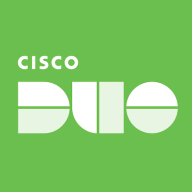

Cisco Duo and IBM Security Verify Access are two competing products in the cybersecurity space. Cisco Duo has higher satisfaction rates for pricing and support, while IBM Security Verify Access is favored for its feature set and perceived value for the price.
Features: Cisco Duo is praised for its intuitive two-factor authentication, seamless integration functionalities, and user-friendly interface. IBM Security Verify Access stands out with its comprehensive access management features, advanced analytics, and robust policy enforcement capabilities.
Room for Improvement: Cisco Duo needs more granular control, better logging capabilities, and enhanced automation features. IBM Security Verify Access requires a more modern system, simplified deployment process, and improved user interface.
Ease of Deployment and Customer Service: Cisco Duo offers straightforward deployment with notable ease and efficient customer service. IBM Security Verify Access, while more complex to deploy, benefits from highly responsive and knowledgeable customer support.
Pricing and ROI: Cisco Duo is cost-effective with a quick return on investment. IBM Security Verify Access, despite a higher setup cost, offers substantial ROI through its feature depth.
| Product | Market Share (%) |
|---|---|
| Cisco Duo | 5.0% |
| IBM Security Verify Access | 2.7% |
| Other | 92.3% |


| Company Size | Count |
|---|---|
| Small Business | 28 |
| Midsize Enterprise | 16 |
| Large Enterprise | 36 |
| Company Size | Count |
|---|---|
| Small Business | 3 |
| Midsize Enterprise | 1 |
| Large Enterprise | 5 |
Cisco Duo is a cloud-based identity security tool offering easy and wide-ranging access protection for users and devices worldwide. It assures identity-first security with clear visibility across multi-cloud, hybrid, and on-premises environments.
Cisco Duo provides robust multi-factor authentication and seamless integration capabilities with existing infrastructures. Appreciated for its stability and speed, it supports distributed workforces by securing VPN access, corporate networks, and cloud services. Duo’s comprehensive identity ecosystem supports easy deployment and management through a single-pane-of-glass management interface. It seamlessly merges with popular platforms like Active Directory and Office 365 across diverse hardware.
What are Cisco Duo’s Essential Features?
What Benefits and ROI Can Cisco Duo Users Expect?
Cisco Duo finds extensive applications across education, finance, retail, and government sectors by fortifying network and application access security. Organizations leverage it for its MFA capabilities, integrating with ERP systems, ensuring protected connectivity with VPN and cloud-based services, crucial in maintaining secure and efficient operations.
IBM Security Verify Access is a complete authorization and network security policy management solution. It provides end-to-end protection of resources over geographically dispersed intranets and extranets.Provides a wide range of built-in authenticators and supports external authenticators.Provides permit and deny decisions for protected resources requests in the secure domain through the authorization API.Manages secure access to private internal network-based resources by using the public Internet's broad connectivity and ease of use with a corporate firewall system.
We monitor all Single Sign-On (SSO) reviews to prevent fraudulent reviews and keep review quality high. We do not post reviews by company employees or direct competitors. We validate each review for authenticity via cross-reference with LinkedIn, and personal follow-up with the reviewer when necessary.